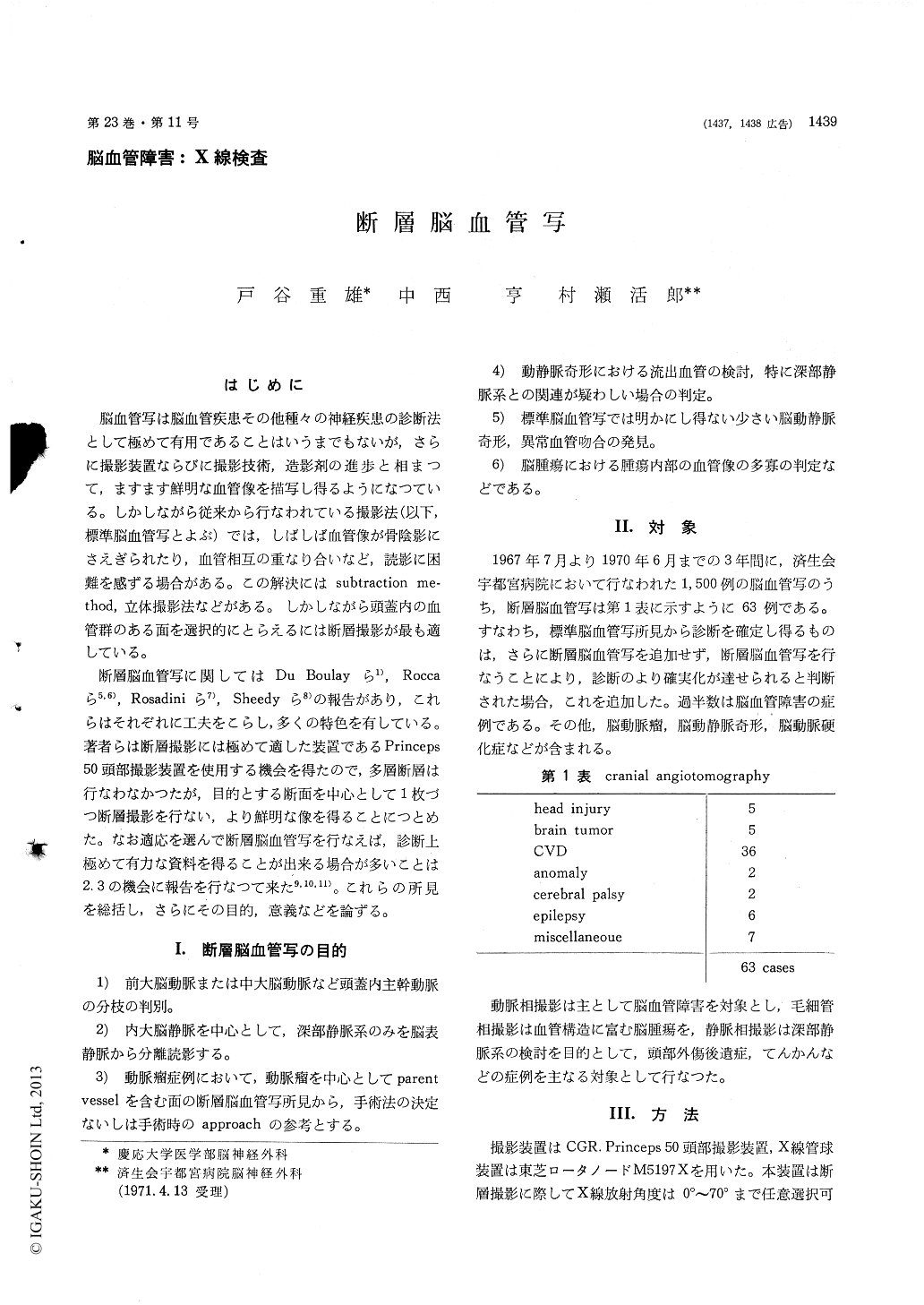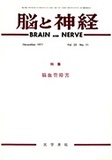Japanese
English
- 有料閲覧
- Abstract 文献概要
- 1ページ目 Look Inside
はじめに
脳血管写は脳血管疾患その他種々の神経疾患の診断法として極めて有用であることはいうまでもないが,さらに撮影装置ならびに撮影技術,造影剤の進歩と相まつて,ますます鮮明な血管像を描写し得るようになつている。しかしながら従来から行なわれている撮影法(以下,標準脳血管写とよぶ)では,しばしば血管像が骨陰影にさえぎられたり,血管相互の重なり合いなど,読影に困難を感ずる場合がある。この解決にはsubtraction me—thod,立体撮影法などがある。しかしながら頭蓋内の血管群のある面を選択的にとらえるには断層撮影が最も適している。
断層脳血管写に関してはDu Boulayら1),Roccaら5,6),Rosadiniら7),Sheedyら8)の報告があり,これらはそれぞれに工夫をこらし,多くの特色を有している。著者らは断層撮影には極めて適した装置であるPrinceps50頭部撮影装置を使用する機会を得たので,多層断層は行なわなかつたが,目的とする断面を中心として1枚つつ断層撮影を行ない,より鮮明な像を得ることにつとめた。なお適応を選んで断層脳血管写を行なえば,診断上極めて有力な資料を得ることが出来る場合が多いことは2.3の機会に報告を行なつて来た9,10,11)。これらの所見を総括し,さらにその目的,意義などを論ずる。
The purpose, significance and indication of cere-bral angiotomography are discussed and the find-ings of these 63 cases presented.
Princeps 50 (CGR, France) apparatus for cranial tomography was used with angle of swing of 30 degrees upon tomography.
The purpose of present method was summarized as follows : 1) Differential visualization of branches of the anterior and middel cerebral artery, 2) Se-lective visualization of deep cerebral vein such as internal cerebral vein, 3) Detailed demonstrations of the efferent veins in arteriovenous malformation, especially in the evaluation of the situation withdoubtful connection with the deep cerebral veins, 4) Detection of small angioma or abnormal vascular anastomosis.
In the medain tomography of the lateral view of the arterial phase, only the the anterior cerebral artery is visualized. No satisfactory results were obtained in the tomography of the lenticulostriate artery. In cases of intracranial aneurysm, only the blood vessels in the neighborhood of the aneurysm including parent vessel are visualized, giving a good referece for operation. In cases of brain tumor, degree of the vascularity in the tumor is clarified by the angiotomography.
Visualization of deep cerebral veins such as inter-nal cerebral vein represents one of the best indi-cations for this method. Especially in the lateral view, it is possible to demonstrate deep cerebralvein alone, without interference by superficial cere-bral veins. Furthermore detailed demonstration of the subependymal veins is probably uselful in the diagnosis of ventricular or paraventricular tumor. The advance of this method consists of the pos-sibility of interpretation of vascularity without interference by the density of the skull and re-solution of the difficulty of interpretation of over-lapping blood vessels. Since tomography is possible from any angle, there is no need for changing the position of patients head and body upon radio-graphy. Paucity of significance of antero-posterior tomography as compared with lateral tomography and increase of the amount of opaque media might represent drawbacks of this method.

Copyright © 1971, Igaku-Shoin Ltd. All rights reserved.


